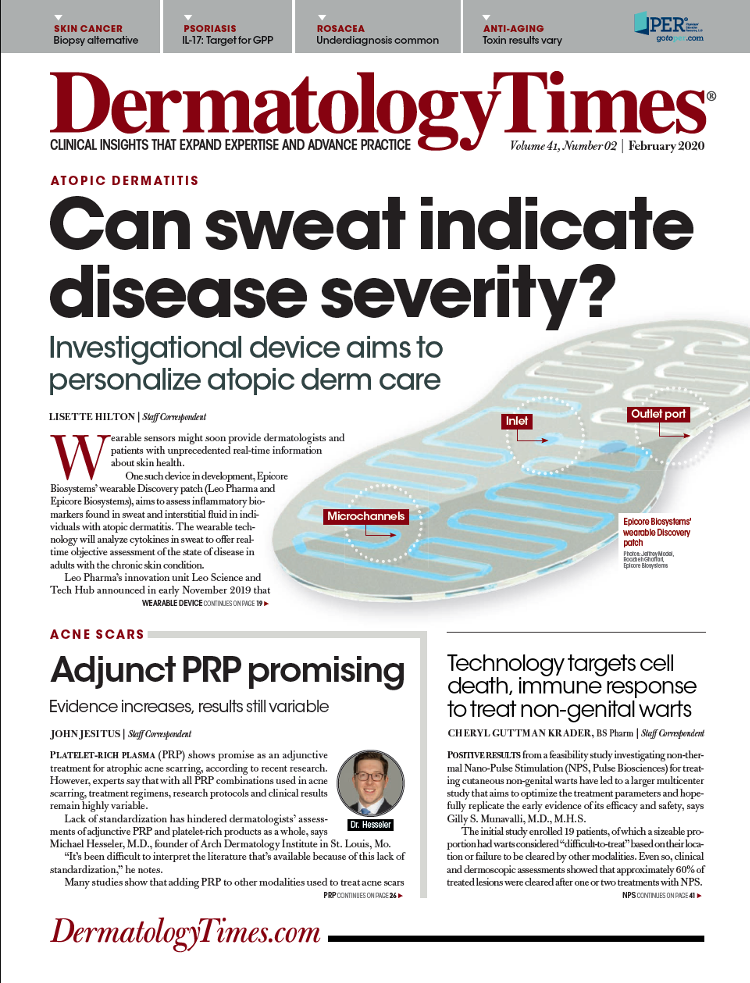- Case-Based Roundtable
- General Dermatology
- Eczema
- Chronic Hand Eczema
- Alopecia
- Aesthetics
- Vitiligo
- COVID-19
- Actinic Keratosis
- Precision Medicine and Biologics
- Rare Disease
- Wound Care
- Rosacea
- Psoriasis
- Psoriatic Arthritis
- Atopic Dermatitis
- Melasma
- NP and PA
- Skin Cancer
- Hidradenitis Suppurativa
- Drug Watch
- Pigmentary Disorders
- Acne
- Pediatric Dermatology
- Practice Management
- Prurigo Nodularis
- Buy-and-Bill
Publication
Article
Dermatology Times
Study supports evidence on indoor tanning risk
Author(s):
A cohort study reveals the dose-response association between cumulative number of sessions and cutaneous squamous cell carcinoma (cSCC) risk in women was the same regardless of duration of use or age at indoor tanning initiation.

Results of a cohort study show a dose-response association between cumulative number of indoor tanning sessions and the risk of developing cutaneous squamous cell carcinoma (cSCC) among women. Importantly, the research found that women with any history of indoor tanning use were at increased risk for cSCC and that the dose-response association between cumulative number of sessions and cSCC risk was the same regardless of duration of use or age at indoor tanning initiation.
MORE: Nanovaccine shows promise for melanoma
Simon Lergenmuller, M.Sc., is a Ph.D., student at the Oslo Centre for Biostatistics and Epidemiology, faculty of medicine, University of Oslo, Oslo, Norway, and lead author of the recently published paper [Lergenmuller S, et al. . 2019 Oct 2:1- 9. Epub ahead of print]. He said, “To our knowledge, this is the first study prospectively investigating the dose-response association between lifetime indoor tanning and risk for cSCC. Although we found that the risk is greater among women with a higher cumulative number of sessions, the main messages from our study are that there is no safe lower limit for using indoor tanning devices and that starting to use indoor tanning later in life seems to be as harmful as earlier initiation.”
“Furthermore, the results of our study provide support for developing policies to regulate indoor tanning. Avoiding indoor tanning may help to reduce cSCC, which is one of the most common type of cancer worldwide.”
The study was conducted in collaboration with researchers from the University of Tromsø, Norway, the Cancer Registry of Norway, and the QIMR Berghofer Medical Research Institute in Australia. It included data from women participating in the Norwegian Women and Cancer Study (NOWAC), which is a prospective population-based observational study initiated in 1991. Participants in NOWAC randomly selected women from the general population who were born between 1927 and 1963. They completed baseline questionnaires from 1991 to 2007 and follow-up questionnaires every 5 to 7 years thereafter.
The questionnaires collected information on pigmentation factors, sunburns, sunbathing vacations and indoor tanning (frequency, age at initiation and duration of use). Data for the study investigating indoor tanning and cSCC were obtained from questionnaires completed through Dec. 31, 2015, and a diagnosis of cSCC was identified through linkage to the Cancer Registry of Norway (CRN), with mandatory registration since 1952.
“Mandatory reporting of malignant diseases from independent sources to the CRN ensures virtual completeness and high-quality data, with 99.7% of the nonmelanoma skin cancers excluding basal cell carcinoma being morphologically verified.” says Mr Lergenmuller.
READ MORE: Indoor tanners lax pn sunscreen protection
The study excluded women with very dark skin and who had prevalent melanoma or cSCC. Of the approximately 172,000 women enrolled in NOWAC, 159,419 women were included in the analysis, of which 95,552 (69.0%) reported ever use of indoor tanning. Among women with a history of indoor tanning, approximately 20% had a ≤10-year history of use, and approximately one- third started at age <30 years.
During a mean follow-up of 16.5 years, 597 women were diagnosed with cSCC. A potential dose-response relationship between indoor tanning use and development of cSCC was investigated by categorizing women into four groups by total number of lifetime sessions: 0 (never), 1-38 (lowest use), 39-240 (medium use), and >240 (highest use). The analysis found that compared with never users, the risk for cSCC development was significantly increased by 29% among lowest users, 60% among medium users, and 83% among women in the highest use group.
Compared with never users, women with a ≤10-year history of indoor tanning and those with a longer history of use had similar significantly increased risks of cSCC (41% and 43%, respectively). Women who started indoor tanning at age 30 or older had a 36% increased risk of cSCC relative to never users, and the risk for women who started indoor tanning at a younger age was increased significantly by 51%.
No association was found between age at initiation of indoor tanning and age at cSCC diagnosis. “We believe ours is the first study to investigate an association between age at initiation of indoor tanning and age at cSCC diagnosis,” Mr. Lergenmuller says.
“The lack of an association differs from the finding in a previous analysis of NOWAC data looking at melanoma risk in which starting indoor tanning at age <30 years was significantly associated with earlier age at cancer diagnosis.”
RELATED: Nano-pulse stimulation promising for skin lesions
The findings of the study are consistent with previous meta-analyses linking use of indoor tanning devices with an increased risk of cSCC. The meta-analyses included between three and six studies; only one of the six studies investigated a possible dose-response relationship.






